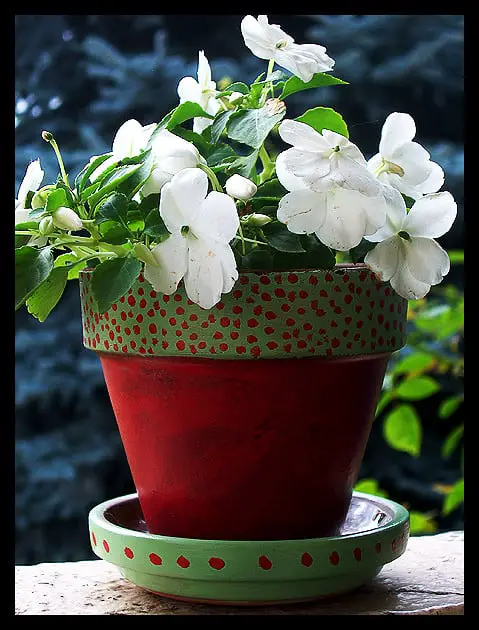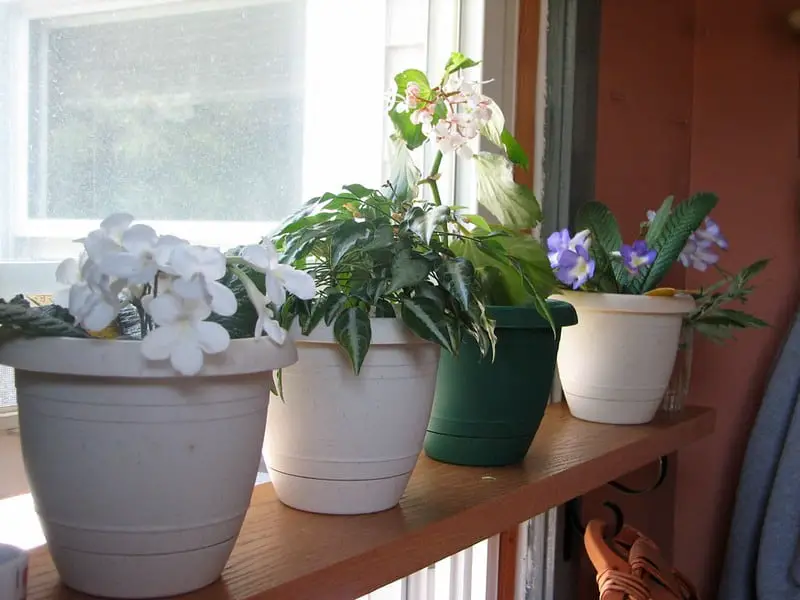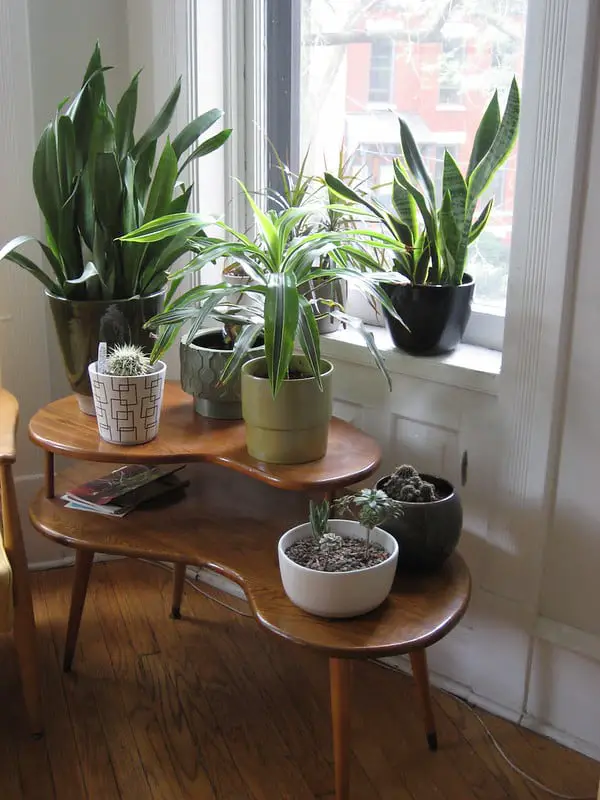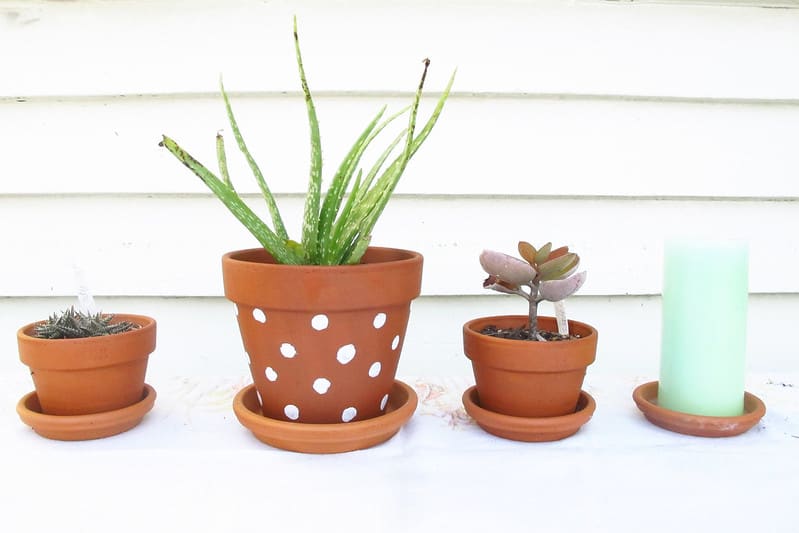Painting is an excellent way to manage and reduce stress, while unleashing your creative side. People even use acrylic paints to decorate their flower pots in their house. Acrylic paints are known for their vibrant colors and for the fact that they are easy to use.
So, will acrylic paint kill plants? The answer is no, acrylic paint has a low toxicity level, and is safe to use around plants since it is generally water based. However, it is a great idea to ensure that none of the paint actually touches or stays on the plant itself.
In this article we go over everything you need to know to properly paint your flower pots with acrylic paint. Let’s get to it!
Is Acrylic Paint Toxic to Plants?

When it comes to using acrylic paint, it is important to consider the toxicity of the paint. Acrylic paint is usually not toxic to plants, but you still need to be careful.
Since acrylic paints are water based, that means they don’t essentially harm nearby plants, however, bear in mind that there are certain conditions which can still make them hazardous to surrounding plants.
Acrylic paints are water soluble which means they don’t require the use of chemicals to clean up, rather they can simply be wiped away using water. My top recommend brand is Arteza, because they have a huge variety of colors and styles.
- While Drying: Though these paints have little odor by themselves, they tend to release a small amount of chemical while they are drying. Though this does not have an effect on the plants themselves, having high levels of chemicals in an unventilated room for prolonged periods of time can make a plant sick. Acrylic paints are usually non-toxic, but I always recommend having plenty of air and ventilation when doing a project.
- During Airbrushing and Sanding: If you are using for acrylic paints for sanding and airbrushing projects, the acrylic paint would release a harmful chemical in the air that can pose a threat to plants exposed to it for a longer period of time.
Types of Acrylic Paint for Plants
There are many types of acrylic paints available in the market, with each having a slightly different mark up.
The most common kinds are the water based acrylic paints that are used for everyday projects, such as this one. These are the least harmful to plants as they become increasingly diluted when used, or even in absorbed by plants.
However, there are acrylic paints used by professional artists that have a high level of chemicals such as mercury, cadmium and lead. For such paints, it is strongly advised that they be disposed of with care, as to avoid harming nearby plants. Before painting near or on a plant, make sure to read the label and look out for any toxic chemicals.
Dumping unused paint directly in the ground can have severe effects on the nutrients of the ground, thus effecting the nearby plants. Moreover, it is known that even a small amount of mercury can be seriously damaging to the plant. Exposure to high chemical levels can lead to stunted plant growth.
Plant Exposure to Acrylic Paints

There are many different ways in which plants can be exposed to acrylic paints.
- Indoor Painting: If you have indoor plants, they will be exposed to the air around you. This means that if you happen to use acrylic paints indoors, especially in an unventilated room, the chances are that the strong fumes of the drying paint will make their way to your plants.
- Close Vicinity: If you are painting near plants, there is a chance of you splashing paint directly on the plant itself. If the leaves of your plant are covered with dried acrylic paint, it would reduce the amount of sunlight they receive, thus affecting its overall health. This can also cause that part of the leaf to die off eventually.
- From the Roots: Moreover, if you happen to dump unused acrylic paint directly into the ground, it would expose the roots of your plant to the water soluble acrylic paint nearby. Though the toxicity level is low, a concentrated amount of acrylic paint when slowly absorbed by a plant can harm it.
Can Spray Paint Kill Plants?
Apart from acrylic paints, you might be wondering if you can spray paint your flower or pots as well. Well, as long as it is done safely, and the spray paint does not get on the plants, it’s definitely way to use.
I always recommend spray painting anything outdoors, in a well ventilated area. If you can, first remove the plant and take our everything from the pot before spraying.

As long as the spray paint doesn’t get on the plants or flowers, they will be fine. Acrylic paints also come in spray bottles as well, which is a nice option if you need to cover a larger area. I recommend Krylon spray paints, since they are very reputable, and have a wide selection of colors.
When spraying your flower pot or vase, you want to first clean and fully dry your pot. If you have an area that you don’t want painted, I recommend putting painters tape over it. For the acrylic color to pop, you will need a primer like this one, to spray on your pot first. After that’s dry, you can spray on your color of choice.
When the acrylic spray paint has fully dried, you will then need to seal it with a varnish. I highly recommend this Krylon Spray Sealant. Speaking from personal experience, it really protects your projects. The sealant will act as a coating to your pots, which will protect it from the rain or any chipping in the future.
Furthermore, the most important reason to seal your pot is when you water your plants, the paint will fall off if it’s not properly sealed, which might be harmful to your plants.
Disposing Acrylic Paint
Though acrylic paint has a low toxicity level, it is a great idea to dispose of it wisely to protect the environment. Check out my other article on How to Dispose Acrylic Paint. It goes over everything you need to know to properly dispose of all sorts of paints.
Some Quick Tips of Disposing Acrylic Paint
- Separate the acrylic paints from the everyday trash, and put it in the ‘toxic’ bin.
- Avoid dumping dissolved acrylic paint directly in the ground. Purchase an acrylic paint hardener before disposing of your paint.
- Avoid using acrylic paints with high lead, mercury, cadmium levels.
Final Thoughts
Acrylic paints, especially the water based kind, are not toxic and can be used around plants safely. However, you should always follow the above mentioned care steps, and remember to use the paints in a ventilated room.
Don’t forget to check out my Recommended Products Page for all you acrylic painting needs. Happy Painting!

